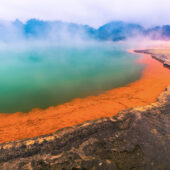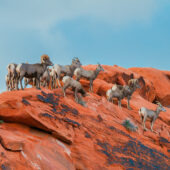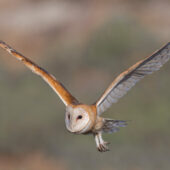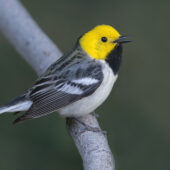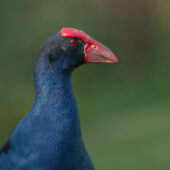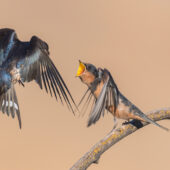“Nikon D500 upgrade: a wishlist from an amateur” is by Sankha Hota (Flickr | Instagram | Website):
A Wish-List from an Amateur: A Nikon D500 Refresh
I have been using D500, the flagship Nikon DX camera for a little over three years and this essay is about my wish list for an upgrade. As I have evolved from a newbie photographer to an experienced amateur, I believe to have utilized the capacity of the D500 to its fullest. While explaining the upgrades that I am looking for in a new Nikon DX camera, I would also like to share my journey as a photographer, alongside.
I am an amateur ‘Nature’ photographer who likes Nikon cameras. I call myself a ‘Nature’ photographer because I love to photograph both wildlife and landscape. I don’t know for sure why (at least, objectively), but I do like Nikon cameras. I am not going to argue that Nikon is the best because there are not sufficient data points for a qualitative comparison- I have not used any other system. I am also a strong believer in “Skill first and Gear second” principle, and only look for an upgrade when there is a feeling that I have exhausted my photography skill-set and the limitation of the camera features is curbing the quality of my shots. The same principle applies to the lenses as well.
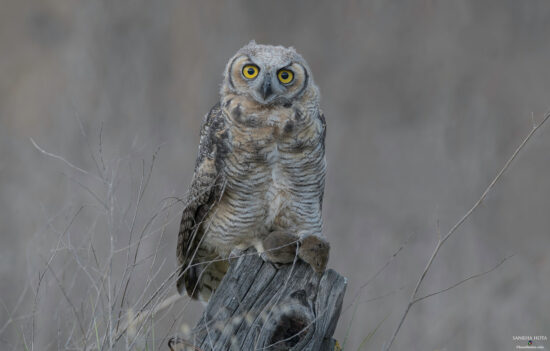
Nikon D500, 500mm/f4 @700mm, f/7.1, 1/50s, iso 400
Before this picture was taken, I had the opportunity to take an action shot when this owl was holding the mouse in its mouth for a brief moment. But, to avoid the high iso noise, I could not increase the shutter speed to freeze the moment to my liking. The maximum limit of iso in my D500 is set to 2500, since beyond that the image qualities are not acceptable.
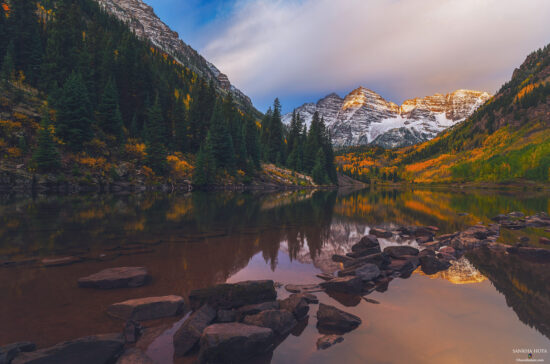
Nikon D750, 20mm, f/13, 1/2s, iso 100, (actually exposure-blending of 18 images)
The famous Maroon Bells in Aspen, CO at sunrise. It was a partially cloudy morning, so I took 6 sets of 3 images (bracketed) with exposure value ranging from -1 to +1. As the cloud was passing over time, the golden light slowly fell on the peaks. First each set of three were exposure-blended, and then the resulting 6 images to get this final image.
My first camera back in 2008 was a Nikon DX D300 with the 18-55mm f/3.5-5.6 and 70-300 mm f/4.5-5.6 AF-S VR lens combination. The following year, I bought the Sigma 150-500mm f/5-6.3 AF APO DG OS HSM lens. However, soon after I concluded the Sigma is not working as well as I had expected. So I sold the Sigma within a few months. But looking back, I realize that the real problem was with my attitude towards photography, rather than the lens itself. Instead of learning the techniques of photography, especially with a telephoto zoom lens, I assumed once I have the reach, the images will be better. Since the kit lenses were not good enough and money was an issue back then to invest in high end telephoto lenses, I simply lost interest in photography.
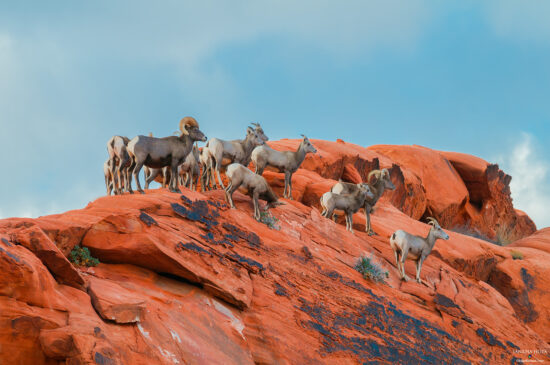
Nikon D300, 70-300mm f/4.5-5.6 @185mm, f/8, 1/60s, iso 200
This image was taken just after sunset in Valley of Fire State Park, NV from the car, hand-holding the camera. Obviously the lens is not sharp and I was not holding it steady. A lot of post-processing is involved in this image.
Fast forward to 2013, I moved from USA to Australia for work. During my sojourn in the Down Under, when visiting New Zealand, I got a scope to use a Nikon D610 FX camera that was bought for my father-in-law, together with the Nikon 18-35 mm f/3.5-4.5D lens. After using that combination and seeing the image quality, my interest in photography rekindled again. Of course, the breathtaking landscapes of New Zealand did boost my photography spirit as well in that trip. Soon after, I bought the Nikon D750, the Nikon 70-200mm f/4 VR, and the Tamron SP 15-30mm f/2.8 Di VC. I paired the old D300 with the 70-200mm f/4 and the new D750 with the 15-30 mm f/2.8.
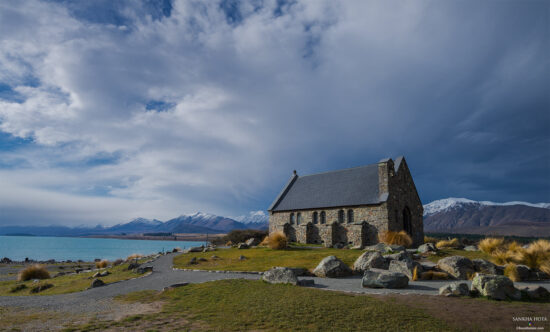
Nikon D610, 18-35mm f/3.5-4.5 @18mm, f/8, 1/100s, iso 100
It was a stormy evening at the Church of Good Shepherd, Lake Tekapo, NZ. The D610 and the lens (no VR) handled the situation quite well, given that I was hand-holding the camera.
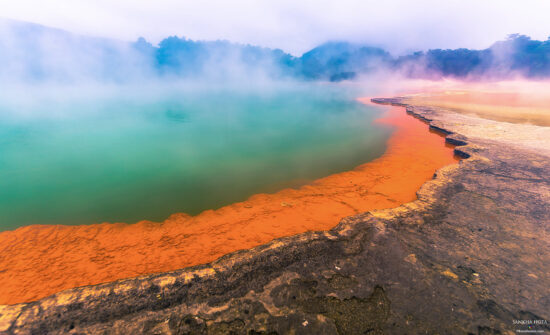
Nikon D610, 18-35mm f/3.5-4.5 @20mm, f/5.6, 1/10s
The haziness in the above image (bottom left part) was due to heavy thermal vapor coming out of the sulfur pool (Champagne pool in NZ).
Although the D300 and 70-200mm pair was at the shorter end for wildlife photography in general, it was good enough for the abundant Australian “urban” wildlife in the city parks. The other combination of D750 and 15-30mm f/2.8 was used for landscape photography, which produced stellar images, to say the least. Actually I am still using that combination today, together with the Nikon 20mm f/1.8G ED. I don’t think I have outgrown the D750 yet and I need to use it more to see any short-comings.
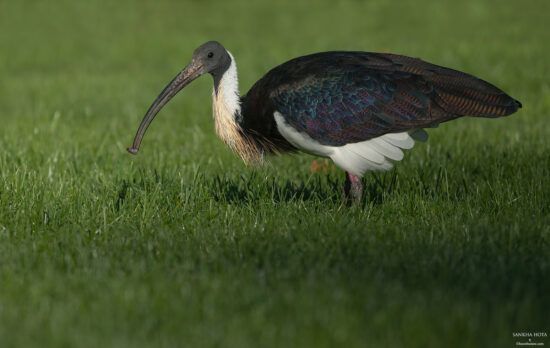
Nikon D300, 70-200mm f/4 @200mm, f/4, 1/2000s, iso 200
The 70-200mm f/4 VR is a very good lens and I took full advantage of it. Although there was enough light, the aperture was kept at maximum to decrease the DOF and enhance the bokeh as the effective focal length was just 300mm.
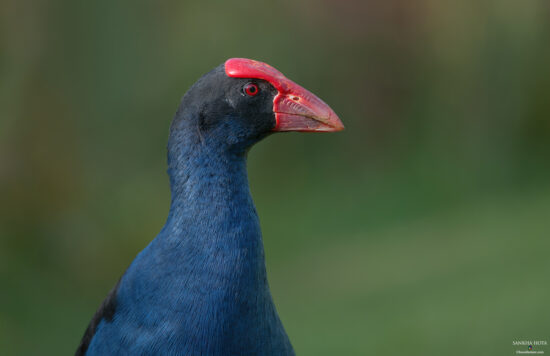
Nikon D300, 70-200mm f/4 @200mm, f/4, 1/500s, iso 200
As the subject was very close but the light was not strong, the aperture was kept to f/4 (wide open) to gain enough speed to freeze the moving bird.
Once back to USA, I got rid of the old D300 and bought the Nikon 200-500mm f/5.6 VR lens. I was not losing much here on the camera font, instead gaining 200mm of focal length. The increase in focal length and pairing with the D750, an FX camera, did help in elevating my learning curve in photography. However, after nearly two years of using that set up for wildlife photography, I started realizing that it was limiting me in some situations. First of all, I felt that this set up was not getting close enough to the subject, a perennial problem for many wildlife photographers. Next surfaced the issue that the camera was not fast enough; be it the FPS or the speed of acquiring and maintaining the subject in action.

Nikon D750, 200-500mm f/5.6 @500mm, f/5.6, 1/1250s, iso 200
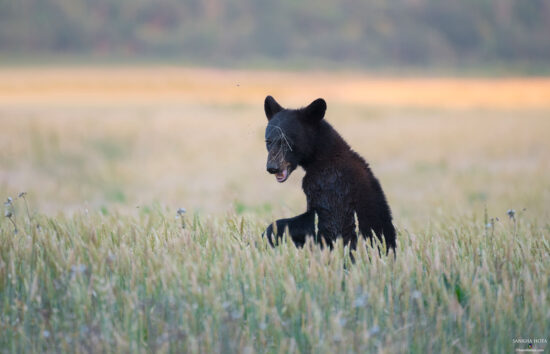
Nikon D750, 200-500mm f/5.6 @500mm, f/5.6, 1/250s, iso 560
In the two images above, several poses were in the sequence as the D750’s continuous burst speed was not enough for the action. I also got only one sharp frame from the Great Egret’s burst sequence. For the Black bear, the D750 handled the noise with stride, but could not keep the focus locked properly.
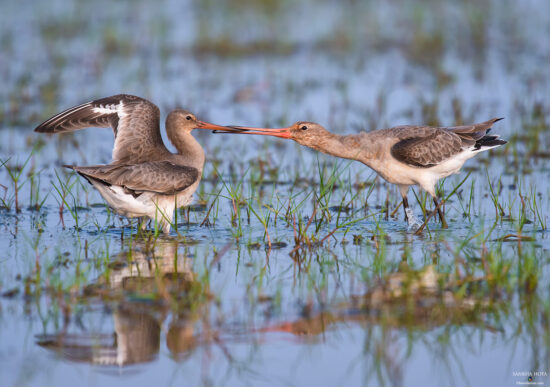
Nikon D750, 200-500mm f/5.6 @400mm, f/5.6, 1/800s, iso 500
The Bar-tailed Godwits’ fighting image at full resolution is not sharp due to the same reason as above; the 6fps burst speed is at the slower end for fast action photography.
To mitigate these problems, I finally bought the D500 in the middle of 2017. It was only then, my learning curve started to pick up at the right pace. For wildlife photography, the D500 and 200-500mm f/5.6 VR combination was a significant improvement over any of my previous ones. I was finally able to keep up with the action and the effective 750mm focal length was sufficient in most of the cases. I started going out to local parks and practice hands on the ins and outs of wildlife photography, whenever there was time. Whatever has been learnt since then, I mostly owe to the stellar camera- Nikon D500. It has helped me push the boundaries and eliminate, for the most part, the technical uncertainties that a camera can cast upon the quality of a photograph, giving me more time to focus on my skills.
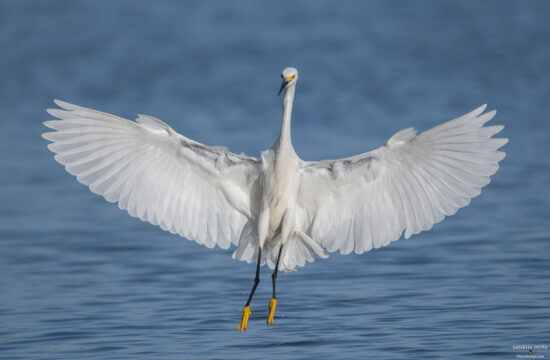
Nikon D500, 200-500mm f/5.6 @500mm, f/5.6, 1/1600s, iso 160
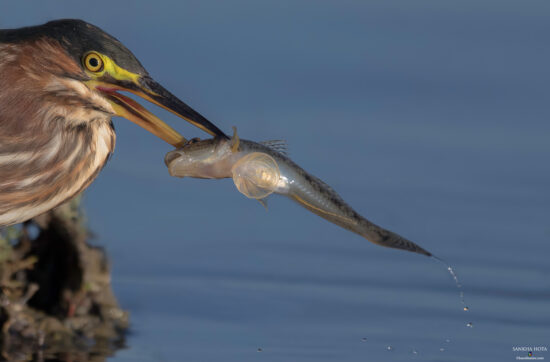
Nikon D500, 200-500mm f/5.6 @500mm, f/5.6, 1/2000s, iso 560
In the above two images, the 10fps continuous shooting speed of the D500 came handy to freeze the action packed moments. I did crop 30% of the frame from left (bottom image) and used spot removal tool to remove some unwanted elements to make it clean.
When Sigma came out with the 500mm f/4 DG OS HSM Sports lens and the price was somewhat close to my budget-range, I quickly jumped onto the bandwagon. Since then I have come a long way. There was initial uncertainty how the Sigma’s performance will be compared to the Nikon 500mm f/4, but reading the online reviews and seeing the example images, I was confident that it would be a good investment. I could only compare it with the Nikon 200-500mm f/5.6 and the difference in the image quality was immediately visible.

Nikon D500, 500mm f/4 @700mm, f/6.3, 1/2500s, iso 250
This was one of the first images taken with the new Sigma 500mm f/4 Sports. It was definitely superior to the Nikon 200-500mm f/5.6 VR lens I was using before.
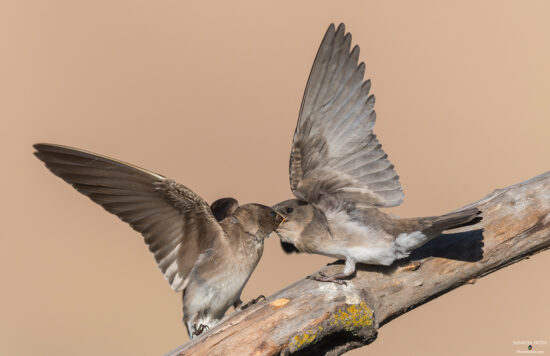
Nikon D500, 500mm f/4 @700mm, f/7.1, 1/2500s, iso 500
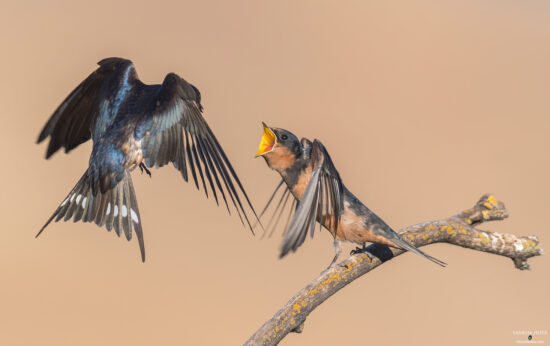
Nikon D500, 500mm f/4 @700mm, f/7.1, 1/2500s, iso 500
The actions shown in the above two images are extremely fast and typically, within few seconds, the whole sequence is over. The D500 and Sigma 500mm f/4 Sports were able to follow the action and I got many sharp frames.
My copy of Sigma is sharp wide-open and the IQ degradation when combined with a 1.4x TC at f/7.1 is barely noticeable compared to the bare lens. Also, the speed of focus acquisition never got reduced to an extent that I would have problem. The only issue I have with this lens is that it shifts focus (ever so slightly) every second or third shot in a continuous burst. However, I have learnt to recompose my shot after every few bursts of 3-4 pictures. That’s why it is very useful to use the Back-Button-Focus (BBF). After having the D500 and the Sigma 500mm f/4 combination, I don’t recall ever using the 200-500mm f/5.6 again. The TC is always attached unless the light is extremely low or the subject is very close.
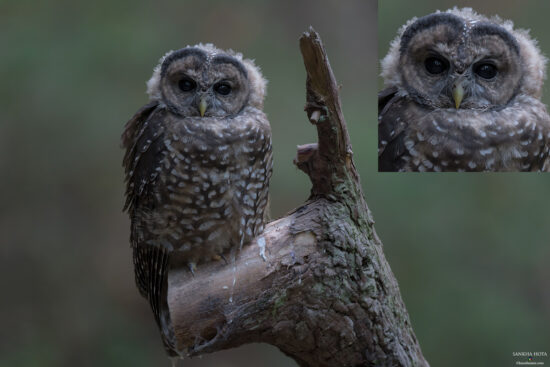
Nikon D500, 500mm, f/4, 1/10s, iso 800
Image taken with lens wide open at f/4 on tripod and shutter controlled by phone+remote. This is one of the rarely seen owl species (Northern Spotted, juvenile) from California. (Inset 100% cropped)
Now, enough with the history of my photography experience and equipment, let’s dive into the actual subject of this essay. I have been using the D500 for just over three years and until very recently the learning curve was a constantly growing one. Meanwhile, Nikon came out with several mirrorless cameras. Although I don’t see myself buying a mirrorless camera right now, I am debating what to go for the next system upgrade. As I am getting more experienced in photography skills and beginning to understand the wildlife better, it is time to take my photography journey to the next level. Instead of taking clean, close shots of animal portraits or regular actions, I want to focus on images that show both action and the environment. I call these types of photos as ‘action wildscapes’. Also, I am finally embracing the overcast weather and the images that I get from such soft/defused lighting conditions.
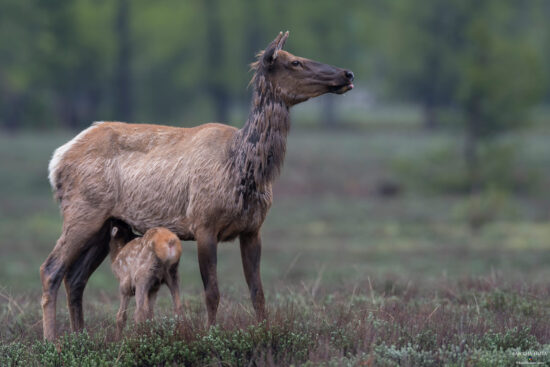
Nikon D500, 500mm f/4+1.4x t.c. @700mm, f/6.3, 1/160s, iso 500
In this image, if I could have leveraged a little more speed it would have been sharper at full size. Instead I have to resize it to make it look sharper. I did not have enough time to remove the TC and use a larger aperture. It was a unique moment for me and I wanted to capture a good image. Most of my images with the D500 have iso ranging from 250 to 800.
Well, you might wonder what that has much to do with an upgrade of Nikon D500; it is in fact quite capable of taking such image. Well, this is where I believe there are scopes for improvements over the D500. No doubt D500 is a versatile and extremely popular camera, but it is more than four years old. If Nikon wants to keep many of the amateur photographers, like us, to be loyal to the brand, it needs to show something special for the allegiance to be unwavering. When mirrorless is the future of photography, we are not there yet, at least for fast action photography with Nikon mirrorless cameras. I still believe Nikon can release a refresh to the D500 if they improve on the following fronts.
This is my simple wish list; a camera with the same ergonomics as the D500 with 12-14 fps and a 30mpx sensor with better usable iso, up to 6400. Obviously the auto-focus system can be borrowed from the D6 and that will be it. It would be an added bonus if Nikon includes 4k video at 60 fps. Again, many people will say that D500 at iso 6400 is fine, but not for me. At the end, nothing can beat the original image if it is clean to begin with. As you can see, what I am asking for is incremental and not extremely difficult to achieve. I am essentially looking for a camera that will give me an extra leverage on cropping and slightly more in noise handling capability.

Nikon D500, 500mm f/4+1.4x t.c. @700mm, f/7.1, 1/200s, iso 1600
This is one example image where iso could not be reduced given the lighting condition. The full image is obviously a lot less sharp and there is definite loss of contrast.
Why do I want a Nikon D550(?) with minor updates? Think about it from the perspective of an amateur photographer. We do not have enough money to spend for a new set-up or system, we do not want to jump into a very new system/technology that is not matured, or simply, few specification upgrades to the already existing camera will suffice our needs for another few years. I am in this last category. For me, better noise performance and 50% increase in megapixel count will be sufficient for the foreseeable future. Some may argue that D850 satisfies what I want. But I don’t want to pay nearly twice the price of a D500. Also, neither do I want to lose the DX reach factor, nor the near full frame coverage of the focus points. However, if Nikon comes up with a refreshed D850 with 12 fps and wider focus point coverage area like the D500, that can be a viable option. Even though the focus is on capturing ‘action-wildscape’ images in environments where noise can be an issue, I don’t want to lose the full-frame focus point coverage option in case I need to take frame filling images- like the singing Northern Parula.
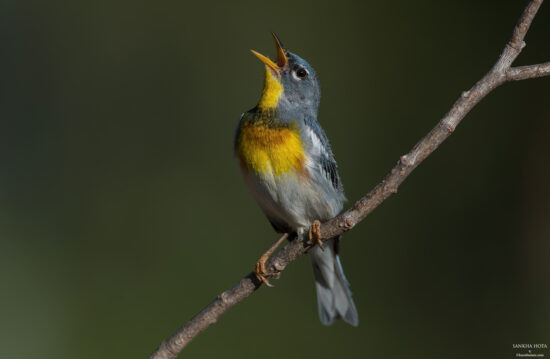
Nikon D500, 500mm f/4+1.4x t.c. @700mm, f/7.1, 1/1250s, iso 320
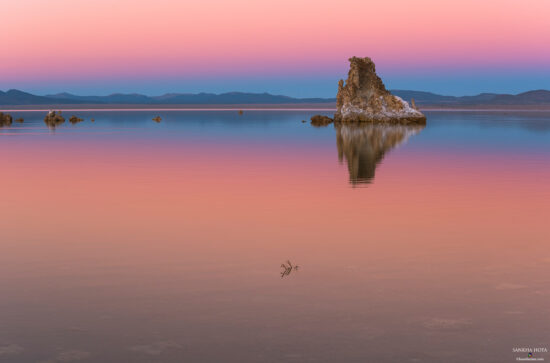
Nikon D750, 70-200mm f/4 @70mm, f/11, 1/5s, iso 100 (bracketing of 5 images)
So for photographers like me, and I believe there are quite a few out there, no other option exists at present but to continue with the D500. It is a hugely popular DSLR camera and I am pretty sure, a refreshed/new D550(?) will also be duly envied upon. My question is why Nikon is not thinking about it? As rumor has it, Nikon may not be releasing another high end DX DSLR camera and instead, come out with a new DX mirrorless. The auto-focus in current Nikon mirrorless cameras is lagging way behind Sony and so does the availability of long telephoto lenses. At the beginning of the essay, I said I like Nikon, but don’t know why. Perhaps they are not providing strong enough reasons to continue to like them. Also, I have not compared Nikon with Canon/Sony. But I do know one thing- both the other brands have good options. When time comes, and I am forced to make a choice as suitable for my need, I may have to jump to another boat altogether. I may not like that choice, or may have difficulty affording it, but I have to move on; until then ‘may the force be with you’.

Nikon D500, 500mm f/4+1.4x t.c. @700mm, f/7.1, 1/2000s, iso 500
If you have an interesting idea for a guest post, you can contact me here.

